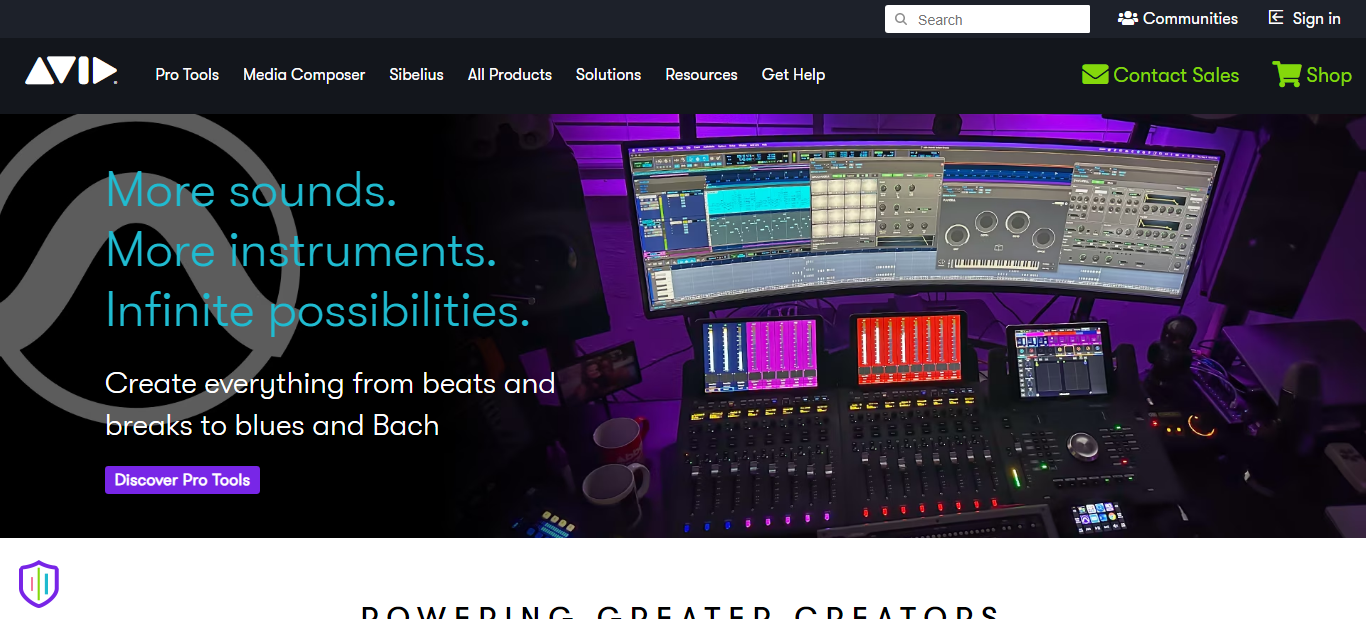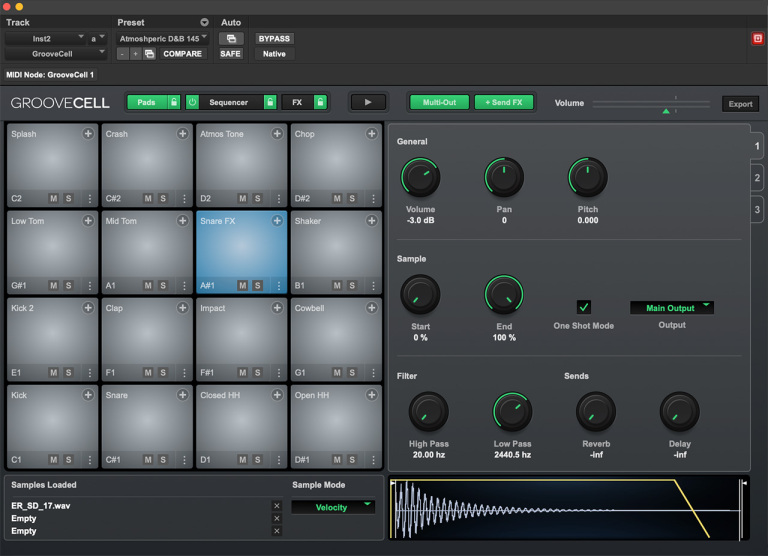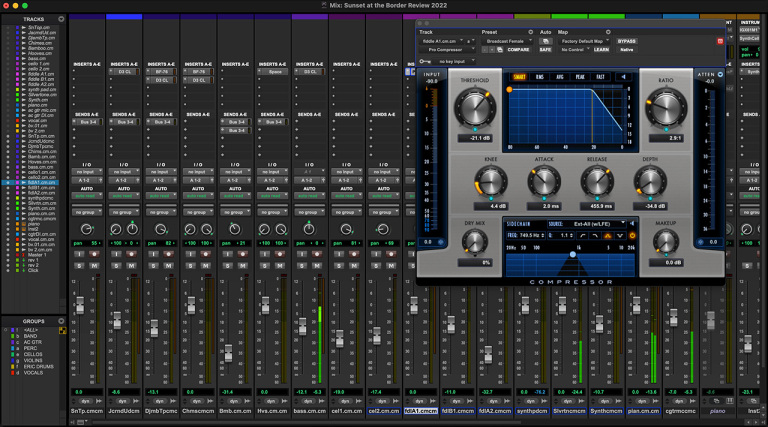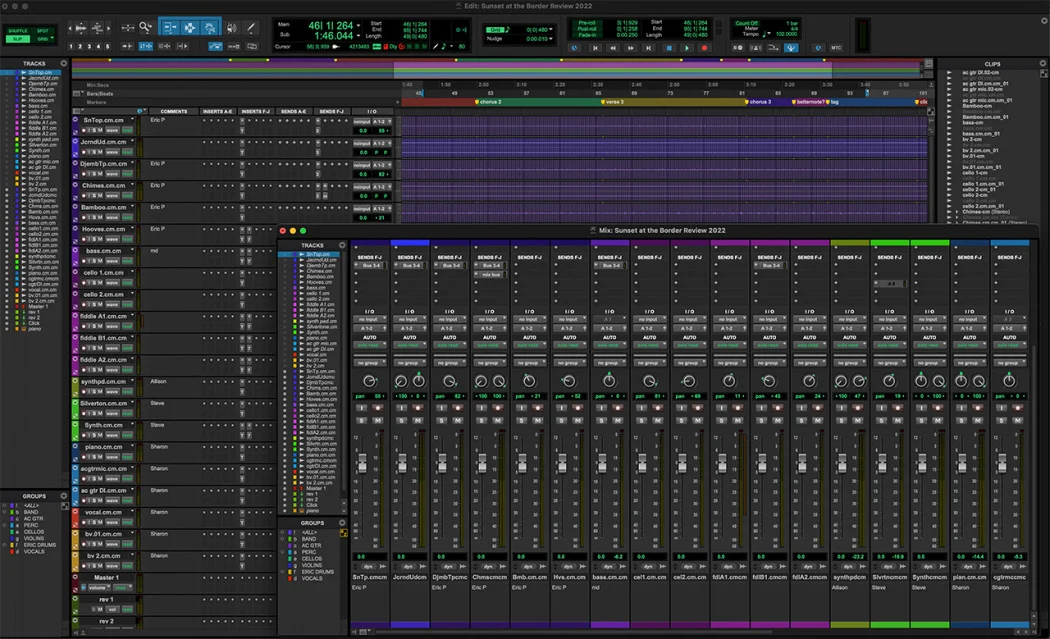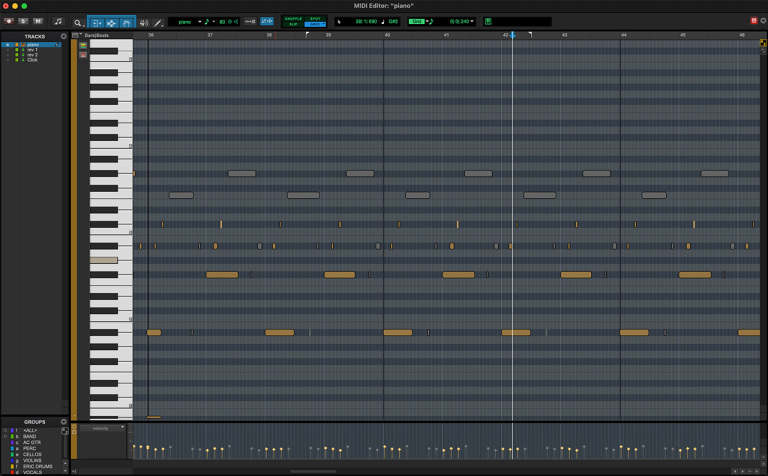Avid Technology, commonly known as Avid, is a prominent American technology company that specializes in developing and marketing software and hardware solutions for video and audio production, post-production, and media management. Founded in 1987, Avid has played a crucial role in revolutionizing the way media professionals create and edit content, particularly in the film, television, music, and broadcasting industries.
One of the company’s most renowned products is Avid Media Composer, a widely-used non-linear editing system that has been an industry standard for decades. Avid’s comprehensive range of tools also includes Pro Tools for audio editing and mixing, as well as various media asset management systems.
The company’s solutions cater to professionals across the entire production workflow, enabling efficient collaboration and enhancing creative capabilities. Over the years, Avid has earned a reputation for innovation and reliability, continually adapting to the evolving needs of the media industry, making it a trusted partner for content creators worldwide.
Pros and Cons
Here are some of the key advantages and disadvantages of using Avid’s Products:
Pros:
- Industry Standard: Avid’s products, such as Avid Media Composer and Pro Tools, have long been industry standards in film, television, and music production. Many professionals are familiar with these tools, making collaboration and project sharing easier in a professional setting.
- Powerful Editing Capabilities: Avid Media Composer offers robust non-linear editing capabilities, providing editors with a wide range of tools to craft their projects with precision and creativity.
- Media Management: Avid’s media management systems, like Avid Interplay, simplify and streamline media organization, making it easier for teams to manage large volumes of content efficiently.
- Collaboration: Avid’s solutions are designed to facilitate collaboration among team members. Features like Avid Unity and cloud-based collaboration tools help multiple users work together on the same project simultaneously.
- Stability and Reliability: Avid’s software is known for its stability and reliability, crucial attributes in professional media environments where data integrity and consistent performance are paramount.
Cons:
- Learning Curve: Avid’s professional-grade software can have a steep learning curve, particularly for newcomers to the industry or those transitioning from other editing platforms. This may require users to invest time and effort in training and gaining proficiency.
- Cost: Avid’s products are generally more expensive than some other editing and production software on the market. This can be a barrier for smaller studios or independent creators with limited budgets.
- Hardware Requirements: Avid’s software demands powerful hardware to run smoothly, especially when working with high-resolution or complex projects. This can add to the overall cost of adopting Avid’s solutions.
- Competition from Other Platforms: Over the years, Avid has faced stiff competition from other software developers offering editing and media management solutions. Some of these competitors have gained popularity among certain segments of the industry.
- License Management: Managing licenses and subscriptions for Avid’s software across multiple workstations can be challenging for larger organizations.
Avid New Version Structure and Setup
Avid typically released new versions of its software products in a structured manner. Please note that the specific details might have changed since then, so it’s advisable to refer to Avid’s official website or documentation for the most up-to-date information.
Version Structure:
Avid generally follows a version numbering system that includes major releases and periodic updates. The version number typically consists of three parts: “major version.minor version.patch version.” For example, a version like “2022.5.0” might represent the major release for the year 2022, the fifth minor update, and the initial patch version.
Major Releases:
Major releases, often referred to as “full versions” or simply “new versions,” bring significant feature updates, improvements, and enhancements. They may introduce new tools, workflows, and capabilities. Major releases often coincide with a new year or significant advancements in the software.
Minor Updates:
Minor updates are released between major versions and are indicated by the second part of the version number. These updates typically include bug fixes, performance enhancements, and some additional features. They aim to improve the stability and functionality of the software without introducing major changes.
Patch Versions:
Patch versions are indicated by the third part of the version number and are typically released to address critical bugs, security issues, and other minor problems found in the software. These updates are generally small in size and focused on providing quick solutions to specific issues.
Setup:
Avid’s setup process for new versions usually involves the following steps:
- Downloading the Installer: Users can obtain the installer for the new version from Avid’s website. Avid may provide separate installers for different products like Media Composer, Pro Tools, and others.
- Uninstalling Previous Versions: It’s usually recommended to uninstall any previous versions of Avid software before installing a new version. This helps prevent conflicts and ensures a clean installation.
- System Requirements: Before proceeding, users should check the system requirements for the new version to ensure that their computer meets the necessary specifications.
- License and Activation: During installation or first launch, users may be prompted to enter their license information and activate the software. This may involve connecting to the internet or using a dongle (hardware key) depending on the licensing method.
- Configuration and Preferences: After installation, users may need to configure their preferences, hardware settings, and project settings according to their workflow needs.
- Testing and Troubleshooting: After setup, it’s advisable to test the software thoroughly to ensure everything works as expected. If any issues arise, users can refer to Avid’s support resources or community forums for assistance.
Audio Editing
Avid offers a powerful and comprehensive audio editing solution called “Pro Tools.” Pro Tools is one of the industry-standard digital audio workstations (DAWs) widely used in the music, film, and television industries for recording, editing, and mixing audio.
Key Features of Avid Pro Tools for Audio Editing:
- Multitrack Editing: Pro Tools allows you to work with multiple audio tracks simultaneously, making it easy to edit and arrange complex audio projects.
- Non-Destructive Editing: Pro Tools utilizes a non-destructive editing approach, meaning your original audio files remain untouched, and any edits you make are stored as separate data, giving you the flexibility to undo or modify changes later.
- Advanced Editing Tools: Pro Tools provides a range of powerful editing tools, including cut, copy, paste, trim, fade, slip, and more. These tools enable precise adjustments and fine-tuning of audio regions and clips.
- Automation: Pro Tools allows you to automate various parameters, such as volume, pan, and plug-in settings, to create dynamic changes in your audio mixes.
- Time Stretching and Pitch Shifting: With Pro Tools, you can adjust the tempo of audio clips without affecting their pitch and vice versa, making it easier to sync audio to video or create unique audio effects.
- Plug-ins and Effects: Pro Tools comes with a vast collection of built-in audio effects and signal processing plug-ins, enabling users to enhance and shape their audio creatively.
- Elastic Audio: This feature in Pro Tools allows you to automatically conform audio to a session’s tempo or adjust the timing of audio recordings for perfect synchronization.
- Offline Bounce: Pro Tools offers an efficient offline bounce feature, allowing you to export your mix or stems faster by processing audio in the background without real-time rendering.
- Collaboration: Pro Tools supports cloud-based collaboration, allowing multiple users to work on the same project simultaneously, making it easier for teams to collaborate remotely.
- High-Quality Audio Engine: Pro Tools utilizes a high-quality audio engine, ensuring accurate and pristine audio processing throughout the editing and mixing process.
Avid New Instruments and MIDI Recording
Avid’s Pro Tools software did not include a comprehensive collection of built-in virtual instruments. However, it allowed for seamless integration with third-party virtual instruments and MIDI controllers. Pro Tools has long been renowned for its audio editing and mixing capabilities, while MIDI and virtual instruments were more commonly found in other DAWs dedicated to music production.
Virtual Instruments:
Virtual instruments are software-based synthesizers or samplers that allow you to create and play musical sounds directly within a digital audio workstation. While Pro Tools didn’t include a vast array of built-in instruments, users could expand its capabilities by using third-party virtual instruments. There are numerous high-quality virtual instrument plugins available on the market that can be integrated seamlessly with Pro Tools to cover various musical needs, such as virtual pianos, drums, synths, and orchestral instruments.
MIDI Recording:
Pro Tools has long been a powerful platform for recording and editing MIDI data. Musicians and producers can connect MIDI controllers, such as keyboards, drum pads, and MIDI guitars, to Pro Tools to record and perform MIDI data directly onto MIDI tracks. Pro Tools’ MIDI functionality allows you to quantize, edit, and manipulate MIDI performances, making it an essential tool for music composition, arrangement, and production.
MIDI recording in Pro Tools involves:
- Creating a MIDI track and assigning a virtual instrument or external MIDI device to it.
- Arm the MIDI track for recording.
- Hit record and start playing the MIDI controller to capture the performance onto the MIDI track.
- Once recorded, the MIDI data can be edited using various tools, such as quantization to fix timing, MIDI event editing to adjust individual note attributes, and automation for adding expressive changes to the MIDI performance.
Remember that software and features may change over time, so it’s always a good idea to check the latest version of Pro Tools and its features on Avid’s official website or documentation.
Mixing and Post-Production
Mixing and post-production are crucial stages in the audio and video production processes that aim to enhance the quality, clarity, and overall impact of the final product.
Mixing:
Audio Mixing is the process of combining multiple audio tracks and elements, such as vocals, instruments, sound effects, and ambiance, into a cohesive and balanced stereo or surround sound mix. The primary goal of mixing is to create a pleasing and well-balanced sonic experience for the audience. Here are some key aspects of audio mixing:
- Balancing Levels: The mixer adjusts the volume levels of individual tracks to ensure they work harmoniously together, creating a pleasing and coherent sound.
- Panning: Panning involves placing audio elements within the stereo field to create a sense of space and separation. It allows the sound to move from left to right or anywhere in between.
- Equalization (EQ): EQ is used to shape the frequency response of audio tracks, enhancing or reducing specific frequency ranges to improve clarity and tonal balance.
- Compression: Compression evens out the dynamic range of audio, reducing the difference between loud and soft parts. It helps control peaks and adds sustain to instruments or vocals.
- Effects Processing: Various effects, such as reverb, delay, chorus, and others, can be applied to tracks to create a sense of depth, ambiance, and artistic effects.
- Automation: Automation allows the mixer to control various parameters over time, enabling dynamic changes in the mix without constant manual adjustments.
Post-Production:
Post-production encompasses all the processes that take place after the principal recording or shooting is complete. It applies to both audio and video productions and involves editing, enhancing, and finalizing the content. For audio post-production, the focus is on enhancing the audio quality and ensuring synchronization with the video. Here are some key aspects of audio post-production:
- Dialogue Editing: Cleaning up and editing dialogue recordings to remove background noise, pops, clicks, and other unwanted artifacts.
- Sound Design: Adding and enhancing sound effects to complement the visuals and create a rich audio environment.
- Foley: Recording and adding custom sound effects to match the actions and movements on-screen.
- Music Editing: Editing and arranging the musical score to fit the timing and mood of the visuals.
- ADR (Automated Dialogue Replacement): Re-recording dialogue in the studio for better clarity or to match lip sync.
- Mixing: The final audio mixing process to balance and optimize all audio elements, including dialogue, music, and sound effects.
Both mixing and post-production play critical roles in delivering high-quality audio and video content, whether it’s a film, television show, commercial, music production, or any other form of media. They require skilled professionals and the use of specialized software and hardware tools to achieve the desired results.
The Avid Tools Pros Use Most
Avid offers a wide range of tools for audio and video production, and the tools professionals use most can vary depending on their specific industry and workflow. However, some of the Avid tools that are widely used by professionals in the media and entertainment industry include:
- Avid Media Composer: Media Composer is Avid’s flagship video editing software, and it is one of the most popular tools used by professional film and television editors. It offers advanced video editing capabilities, media management, and collaborative features, making it a preferred choice for feature films, TV shows, and documentaries.
- Avid Pro Tools: Pro Tools is a leading digital audio workstation (DAW) used by musicians, audio engineers, sound designers, and post-production professionals. It is renowned for its powerful audio editing, mixing, and processing features, making it the go-to tool for music production, sound design, and audio post-production in films and TV.
- Avid Sibelius: Sibelius is a music notation software that caters to composers, arrangers, and music educators. It is widely used for creating and editing sheet music and orchestral scores, making it an essential tool in the music industry.
- Avid MediaCentral | Editorial Management: This tool is a media asset management system that helps large-scale productions manage their media files, collaborate with teams, and streamline their workflows. It is commonly used in broadcast and post-production environments.
- Avid NEXIS: NEXIS is Avid’s shared storage system, designed to handle large-scale media production workflows with multiple users working simultaneously. It provides centralized storage for video and audio assets, facilitating collaboration and efficient media management.
- Avid Pro Tools | HDX: Pro Tools | HDX is an advanced version of Pro Tools that offers higher processing power and real-time DSP capabilities, allowing users to handle more extensive audio sessions with complex plug-in processing.
- Avid Interplay: Interplay is a media asset management and workflow automation system. It facilitates collaboration, logging, searching, and access to media assets in professional broadcast and post-production environments.
- Avid Artist Series Control Surfaces: These hardware control surfaces, such as the Avid S6 and Avid Dock, are used in professional post-production studios to provide tactile control over editing, mixing, and automation tasks.
Avid Pro Tools Specs
Avid Pro Tools can vary depending on the version and specific features used. However, Pro Tools is known for being resource-intensive, especially for larger projects and sessions with numerous tracks and plugins. Below are the general system requirements for running Pro Tools on a Windows or macOS-based computer:
Minimum System Requirements for Pro Tools:
Windows:
- Operating System: Windows 10 (64-bit)
- Processor: Intel Core i5 processor (or equivalent)
- RAM: 16 GB of RAM (32 GB or more recommended)
- Storage: Minimum 15 GB free hard disk space (SSD strongly recommended)
- Graphics Card: Dedicated graphics card highly recommended (NVIDIA or AMD with a minimum of 1GB dedicated VRAM)
- Audio Interface: Compatible audio interface with ASIO driver support
macOS:
- Operating System: macOS 10.13.6 High Sierra, macOS 10.14.6 Mojave, macOS 10.15.7 Catalina, or macOS 11.3.1 Big Sur
- Processor: Intel Core i5 processor (or equivalent)
- RAM: 16 GB of RAM (32 GB or more recommended)
- Storage: Minimum 15 GB free hard disk space (SSD strongly recommended)
- Graphics Card: Dedicated graphics card highly recommended (NVIDIA or AMD with a minimum of 1GB dedicated VRAM)
- Audio Interface: Compatible audio interface with Core Audio driver support
Additional Recommendations:
- For larger sessions and advanced features, higher-end processors (e.g., Intel Core i7 or higher) and more RAM are recommended.
- An SSD (Solid State Drive) is strongly recommended for improved performance, especially when working with large audio projects and virtual instruments.
- For audio recording and low-latency monitoring, use a high-quality audio interface with low-latency drivers that are compatible with Pro Tools.


